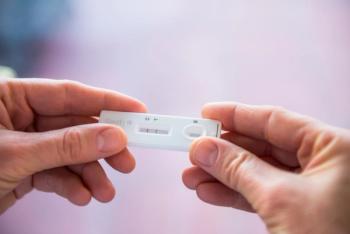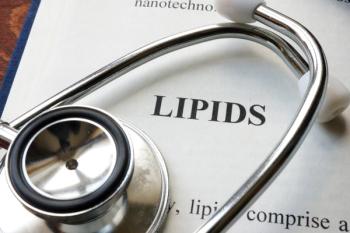
Oxygen delivery in the home setting
Supplemental oxygen can be delivered safely to patients in their home. Here experts discuss the indications for oxygen therapy, the amount needed, and the interface for delivery.
There are a number of respiratory conditions in infants and children that can lead to hypoxemia, requiring supplemental oxygen (with or without ventilation) in the home setting. Some of the more common diagnoses that may require home supplemental oxygen include bronchopulmonary dysplasia (BPD) and chronic lung disease (CLD). It is important to identify the indication for oxygen therapy, the amount needed, and the interface for delivery (Table).
For treatment of hypoxemia, in a patient without cardiac disease, typically a goal saturation of ≥92% is often used as a threshold at sea level. Patients with congenital heart disease with mixing lesions or shunts may have different goal saturations depending on their physiology. Oxygen is a pulmonary vasodilator, thus patients with pulmonary hypertension may have higher recommended goal saturations (≥95%).
Low-flow nasal cannula
Low-flow nasal cannulas are used for treatment of hypoxemia without ventilation needs. There are 2 settings that can be controlled: the flow rate and the fraction of inspired oxygen (FiO2). Optional humidification can be achieved through cold bubble or heated humidification devices.1 The flow rate can range from 1/32 L/min to 10 L/min based on the concentrator and flow meter, but typically the maximum flow rate is 4 L/min as higher flows may generate turbulence and not successfully deliver a higher oxygen concentration.2
Whereas inpatient devices can deliver oxygen concentrations between 21% (room air) to 100% FiO2, outpatient devices can only deliver 100% FiO2. It should be noted that as the nasal cannula is an open oxygen delivery system, 100% FiO2 is diluted with room air in the nasal passages, so the effective FiO2 delivery to the lungs generally does not exceed 40%.3
High-flow nasal cannula
High-flow nasal cannula is a newer means of home oxygen delivery and use in the home setting is still evolving. It has been used for obstructive sleep apnea (OSA) and laryngotracheomalacia.4,5 Both the interface (cannula) and humidification system differ from low-flow nasal cannula. The settings are similar in that both the flow and the FiO2 can be titrated to deliver heated and humidified air. However, it allows delivery of effectively higher inspiratory flows and oxygen concentrations to the lungs.
Although this is also an open system, the flow provided is presumably higher than the intrinsic inspiratory flow, which will decrease trapping of room air and mixing in the upper airway.3 The use of high-flow can eliminate dead space, overcome airway resistance in the nasopharynx, improve compliance, and deliver some level of positive pressure.6,7 Devices can deliver as much as 70 L/min of flow. In the acute setting, flows of 2 L/min per kilogram have been used.8
Noninvasive positive pressure ventilation
Oxygen can also be delivered as part of noninvasive positive pressure ventilation (NIPPV) through a nasal mask or pillows. The 2 most common modalities prescribed for home use are continuous positive airway pressure (CPAP) and bilevel positive airway pressure (BiPAP).
The CPAP modality is used for treatment of sleep apnea with gas exchange abnormalities, and there are 2 settings: a single continuous pressure and optional supplemental oxygen. The oxygen is typically prescribed in L/min of flow. It is bled into the CPAP flow and can be titrated based on goal saturations
The BiPAP modality is used for treatment of sleep apnea with gas exchange abnormalities as well as chronic respiratory insufficiency. The settings include an inspiratory positive airway pressure (IPAP), expiratory positive airway pressure (EPAP), optional backup rate, and supplemental oxygen. Similar to CPAP, the oxygen is typically prescribed in L/min, but some machines can calibrate and display the FiO2.
Mechanical ventilation
Oxygen can also be delivered via mechanical ventilation, which is implemented for chronic respiratory failure. A tracheostomy is required for mechanical ventilation at home. Ventilator settings typically include FiO2 (21%-100%) and most ventilators calibrate and display the FiO2. The amount of oxygen in L/min of flow necessary to achieve a specific FiO2 depends on the air flows through the ventilator and can vary by machine and patient. Typically, an FiO2 of 40% is the upper limit of support that can be provided in the home setting. This implies a high level of support, and also beyond this maintaining oxygen supply would be difficult.
Face masks
Face masks are typically not used for delivery of oxygen at home in pediatric patients. It is difficult to estimate reliably how much oxygen the patient is receiving, so use is reserved for hospitals where monitoring is closer. One exception to this is comfort care, when the patient does not tolerate a nasal cannula. It is important to note that high flows of oxygen (10-15 L/min) may be required in order to prevent rebreathing of CO2.
Equipment
Oxygen delivery at home typically requires an oxygen concentrator or pressurized oxygen tanks. Concentrators are powered by electricity, utilize room air to generate flows up to 10 L/min, and can provide up to 95% FiO2 when bled into an oxygen delivery device.2 Small portable oxygen tanks can be provided for transport, and for a patient requiring 3 L/min of flow typically last 100 minutes. Tanks must be placed in holders or secured to the ground. In special circumstances (ie, airplane travel), a battery-powered portable oxygen concentrator can be prescribed. As a general safety rule, the battery time should be double the flight time.
An alternative to concentrators and pressurized oxygen tanks is liquid oxygen, which is prescribed for disease processes that are more sensitive to variation of inspired oxygen. These tanks are heavy and carry a risk of freezing regulators. Ordering a pulse oximeter is critical to allow for accurate monitoring of oxygen saturations on any patient on home oxygen. Ordering the appropriate size and type of pulse oximeter probes is also essential for accurate measurements.
Risks
Just as with other therapies, there are risks and safety hazards to consider. Oxygen toxicity can lead to generation of free radicals, pulmonary edema, and absorption atelectasis.9,10 Length of oxygen tubing can be hazardous depending on the mobility of the child, and measures should be taken to secure tubing as best as possible. Oxygen itself is not flammable but can contribute to rapid spread of fire.3
Aside from the physical risk, oxygen should be titrated with caution, and only with direct instructions from providers. Patients with significant hypercarbia and OSA rely on the hypoxemic respiratory drive to breathe, and blunting hypoxemia by increasing the inspired fraction of oxygen in a patient who is hypoventilating can be fatal. Also, oxygen acts a vasodilator and can lead to pulmonary overcirculation and cardiac failure if dosed incorrectly in a patient with congenital heart disease.
Takeaway for pediatricians
Home oxygen therapy has liberalized patients with chronic conditions from the confines of the hospital. Oxygen can be delivered safely, but it is imperative to focus on the indication, and to titrate delivery of the lowest FiO2 required by the patient.
Newsletter
Access practical, evidence-based guidance to support better care for our youngest patients. Join our email list for the latest clinical updates.














